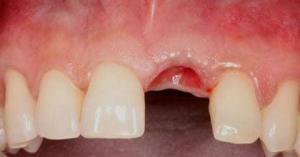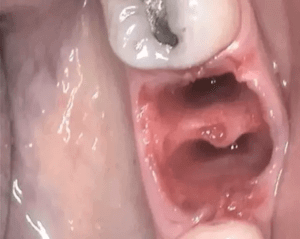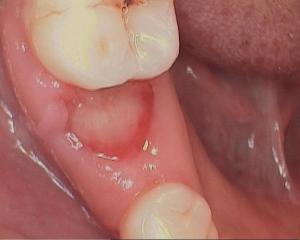WISDOM TOOTH SURGERY RECOVERY PERIOD
The worst discomfort occurs during the first six hours after the anesthetic has worn off. Take your medication while you are still numb. People do better when they take their medications on time and stay ahead of pain and swelling. It is possible that slight bleeding may reoccur, especially after eating and drinking. If significant bleeding occurs, place fresh gauze packs or wadded paper towel over the surgical site that is actively bleeding and bite very firmly for thirty minutes. Avoid spitting or using straws, as they can cause bleeding by creating negative and positive pressure in the mouth. You can minimize swelling by using cold packs for the first 24 hours. This should be used next to the surgical sites 20 minutes on and 20 minutes off. Day one, do not brush, rinse, or spit. Day two, brush your teeth with a soft toothbrush. You should also begin gentle rinses with warm salt water 2-3x per day (especially after mealtime and before bed). Avoid smoking for at least 3 days and avoid chewing tobacco until the surgical sites are completely healed. Patients who use tobacco experience a longer recovery period and a higher level of complications.


Often 2-3 days of recovery is needed before returning to daily routines. You may need an additional day or two to regain strength. During the first 24 hours, avoid any strenuous cardiovascular activity that could encourage bleeding from the extraction site, or interfere with the blood clot retention in the extraction site. Disruption of the clot in the extraction site can cause a dry socket and delayed healing and pain. Avoid working out, athletic competition, band, and choir participation for 3 to 4 days. If you feel tired, have increased pain, swelling, or bleeding, allow an extra day or two of light activity. If you had sedation dentistry, you need to be by another adult for at least 5 hours following oral surgery. You cannot be left unattended. You may need assistance standing and going to the bathroom while you are still feeling the effects of the anesthesia. Do not drive, drink alcohol, or operate any kind of machinery for 24 hours after oral or IV Sedation Dentistry. You will receive written prescriptions. Here is an idea of what to expect in the week following wisdom tooth surgery:
Wisdom Teeth Surgery Healing and Recovery Time Line:

DRY SOCKET
Dry Socket (alveolar osteitis) is a painful dental condition that can occur following a tooth extraction. Normally, after a tooth is extracted, a clot forms at the extraction site. This clot protects the underlying bone and nerve endings in the empty socket. If this clot fails to develop, comes out, or dissolves before the wound has healed completely, dry socket is the result.
With no protective clot, the exposure of underlying bones and nerves results in excruciating pain. The socket may begin to fill with food debris and bacteria, intensifying the pain. The onset of dry socket is typically one to three days following wisdom tooth extraction.
Signs and symptoms of dry socket may include:
- Severe Pain
- Partial or total loss of the blood clot at the extraction site
- Visible bone in the socket
- Pain that radiates from the extraction site to your ear, eye, temple, or neck on the same side of your face as the extraction
- Bad breath or a foul odor coming from your mouth
- Bad taste in your mouth
It is normal to feel some discomfort after a wisdom tooth extraction. “Normal” pain should be manageable with the pain reliever prescribed by your dentist. Additionally, this pain should lessen over time. If you develop new or worsening pain after your wisdom tooth extraction, contact your dentist immediately.
RISKS AND POTENTIAL COMPLICATIONS
- Sinus communication during removal of an upper wisdom tooth. Chances are small but tangible.
- Sinus communications normally heal and close on their own without the need for additional procedures
- Damage to teeth adjacent to the extraction site including broken fillings, crowns, tooth cracks
- Damage to nerve in the lower jaw. Usually heals and returns to normal in 1-6 months. Patients may experience temporary numbness or partial numbness during the healing period.
- Dry Socket
COMMON POST-OP SIDE EFFECTS
- Pain
- Swelling
- Bruising
- Discomfort
- Minor Bleeding
- Tooth Sensitivity
- Limited Mouth Opening
POST-OP INSTRUCTIONS
- With firm pressure, bite down on cotton gauze or a damp cotton pack placed over the extraction socket for at least 30 minutes.
- Use ice packs for the first 24 hours (20 mins on, 20 mins off) to minimize chances of swelling.
- Take a mild strength painkiller for reducing pain and discomfort.
- Avoid spitting, sneezing, or coughing.
- Do not smoke.
- Avoid sucking on a straw with pressure to avoid clot dislodgement.
- Eat soft, cold, and non-spicy foods.
- Restrict your physical activities and take complete rest for 24-48 hours.
- Avoid vigorous rinsing, spitting and repeated touching or licking the area of surgery.
- Perform warm water saline rinses 4-5 times a day after 24 hours to flush out food debris for soothing and antibacterial effect.
- Minimal post-operative bleeding is a common occurrence. Do not panic. However, if persistent bleeding is encountered, bite firmly on a wet tea bag and call your oral surgeon.
- If sutures/stitches were placed, visit after 7 days for their removal.
Days 5-7:

Most symptoms should subside except limited jaw opening and a minor, occasional ache. It may take 2-4 weeks to reach normal Jaw opening. If any stitches remain, you should return to your dentist to have them removed. During this period, you should be able to stop taking the prescription medications. Some patients who bruise easily and who had pain before the extractions (especially patients who received emergency wisdom tooth removal) may have more pain for up to 10 days. It is extremely important to finish all antibiotic medications, even if there is not pain.
Wisdom tooth removal healing time depends on many factors, such as:
- Health
- Age
- Use of Platelet Rich Fibrin (PRF)
- The health of the tissue surrounding the surgical site
- The type of surgery required (full bony impaction vs partial bony wisdom tooth impaction)
- The surgical removal technique employed (pulling the tooth vs root sectioning and careful elevation)
- How well you take care of yourself after surgery
- Whether or not you follow the post-op care instructions provided by your doctor
Days 3-4:
Throbbing and aching pain will give to soreness. There may be some general jaw inflammation and deep discomfort. Jaw opening may be limited down to 60% of the normal opening. Be sure to rinse with warm salt water and keep food particles out of extraction sites. Gently dab and brush at the extraction sites with a toothbrush (no toothpaste) in between saltwater rinses. You may see a white or yellow tissue forming in the extraction site that has a fluffy appearance. It may be food particles, plaque, or NORMAL Collagen formation. Collagen is what the body makes ahead of gum tissue. Light brushing and rinsing should remove plaque and food particles. Do not Force out the Collagen as it is protecting the site. If after rinsing and cleaning, you smell a persistent foul odor, notify your Dental Surgeon.

Days 1-2:

Some throbbing and aching pain controlled by prescription medications. Minor bleeding of extraction site(s) after rinsing, eating, or drinking. Minor bruising and swelling both inside and outside of the mouth. Notify your dental surgeon if there is significant and persistent bleeding, or moderate to severe swelling. Notify your doctor if you experience severe nausea, rash, hives, or swelling of the throat or tongue.

